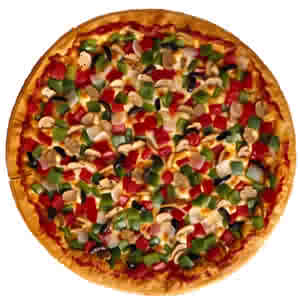How to Count Restaurant Meals and Take-Out Food
The average American eats four or more restaurant meals each week. Most of us have hectic, busy lives, and eating out can be convenient and fun. If restaurant meals are part of the way you eat, this doesn’t have to change with carb counting. With a little practice, you can learn to apply the principles of carb counting to just about any menu item at any restaurant.
Information for the Asking
Today, there’s more nutrition information available for restaurant foods than ever before. Fast food restaurants like McDonald’s, Burger King, and KFC post nutritional information in their restaurants and on their websites. Some national chains like Applebee’s, Pizza Hut, and Panera Bread often include nutritional information on their websites. Some also offer brochures or binders with nutrition information by request. If you often eat at these types of places, take a few minutes to visit their websites and look up the menu items you tend to order. Add this information to your personal database so you can access easily next time.
Many smaller, independent restaurants do not generally have nutrition information readily available. This is true of fancy, special occasion restaurants as well as the mom-and-pop takeout place on the corner. When you eat in these types of restaurants, you’ll need to do a little more work.
If you eat out at the same places regularly, start by writing down what you usually eat at different meals. Then estimate the size of the serving and the amount of carbohydrate in it. If you have records of your blood glucose levels after eating these meals, put that down, too. These records will provide clues about how well you are estimating the carbohydrate in your restaurant meals. Be sure to include the beverages you drink, whether they are carbonated, fruit juices, alcoholic, or calorie-free. Some of these beverages have carbohydrates and calories, and you may not realize how much you are consuming.
Tips to Make Your Best Guess
If you weigh and measure foods regularly at home, you’ll be familiar with portion sizes. Remember to use these skills in restaurants, too. Measuring portions by comparing them to your hands and common household items can be particularly helpful in restaurants, where you don’t’ have access to measuring spoons, cups or a food scale.
If there’s no nutrition information for the restaurant, look for the same or similar dish on the website of a national chain; use this information as a starting point for your estimation. For example, the nutrition information for chicken parmesan listed on the Macaroni Grill website can help you estimate the carb count in the chicken parmesan you get at your favorite local Italian place. To get even more accurate, check out the carb counts for the same dish at several different places and take an average.
If you’re a regular and you have a few items you regularly order, the restaurant staff may be willing to share a recipe with you so you can estimate the carb count based on the techniques you learned from the books for experts.
Another helpful tactic is to order your favorite dishes for takeout, so you can weigh n admeasure the portions at home. You can weigh the pieces of meat and bread, measure the servings of rice or pasta, and estimate the content of sauces and coatings. This exercise is usually quite eye-opening- restaurant portions are often quite large! You may realize that one meal should become two.
If you can’t find information on some foods you regularly eat, see if you can find a recipe for a similar dish on a recipe website, in a cookbook in the library, or in the collection of a friend of family member. They often contain added sugar, flour, or corn starch, all of which contain carbohydrate and impact blood glucose.
Restaurant Eating: Tips and Skills
One of the biggest problems with restaurant meals is that the portions are huge. Here are tips and tactics to help you control your portions and thus, carbs and calories:
• Avoid items on the menu that include words like large, giant, grande, supreme, extra large, jumbo, double, triple, double-decker, king-size, monster, and super. Instead, choose items described as junior, single, petite, kiddie, and regular.
• If you see a weight for a piece of meat on the menu, it’s most likely that raw weight. For example, you might see a hamburger referred to as a “quarter pound” of meat, a fillet weighing 6 ounces, or a slice of prime rib that weighs 10 ounces. Remember that these are average – not exact weights.
• Consider ordering soup and salad, or an appetizer and a salad or soup. That may be enough for you.
• Ask for a half portion or share an entrée with another person.
• Ask for a takeout container at the beginning of the meal, and place the extra food in it to take home.
A Note About Pizza

Pizza can be challenging for some people with diabetes. It can cause blood glucose to rise in some people, and it can cause a delayed rise in blood glucose in other people. For starters, when you eat pizza, do your best to get a solid carb count. Check the websites of national chains and take an average of the carb counts you find for similar types of pizza.
Then check your blood glucose two hours after you eat. If there is a lot of meat and cheese on the pizza and/or if your two-hour blood glucose wasn’t what you expected, check your blood glucose again three to five hours after starting the meal. If your blood glucose is high, then the high fat content in the pizza could have been the cause. Keep close records the next time you eat pizza, too. This is important information to know – and you’ll use it every time you eat pizza.

